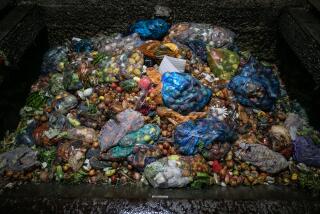N. Koreans Eating Cornstalks, Grasses, U.N. Food Agency Says
- Share via
BEIJING — North Korea has run through its food stocks, leaving millions of people to survive by eating grasses, cornstalks or whatever else they can forage, the World Food Program reported Tuesday.
The government distributed the last of the fall harvest with early April’s monthly food ration--3 1/2 pounds of grain, or enough to last one person about 10 days, the U.N. agency said.
Most of North Korea’s 23 million people rely on food rations from the Communist government. They can now expect little food until the first vegetable and potato crops are harvested in June, said David Morton, the WFP representative in North Korea’s capital, Pyongyang.
“These are the most difficult months of the year for the people of North Korea,” Morton said. “Most people try to survive by whatever coping mechanisms they have.”
The gap between harvests has become an annual occurrence in North Korea’s four years of famine. In the lean weeks to come, government mills will churn out a staple of the crisis--edible roots, grasses, seaweed, cornstalks and the like often mixed with cereals and enzymes and cooked into noodles or buns.
The substitutes are “basically a stomach filler” with little nutrition, and eating them causes digestive problems, especially for children and the elderly, Morton said.
Floods, drought and other natural disasters ruined North Korea’s collective agriculture system, which was already crippled by mismanagement and the nation’s loss of crucial Soviet bloc trading partners.
More to Read
Sign up for Essential California
The most important California stories and recommendations in your inbox every morning.
You may occasionally receive promotional content from the Los Angeles Times.










